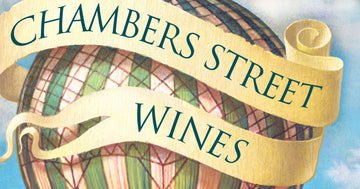On Coelacanths and Unicorns — A Living Fossil
11/19/14 -

There’s a fairly common and fairly banal expression among wine cognoscenti for rare bottles from bygone years or long-since retired winemakers: Unicorn Wines. Some love the term; others deride it. Implied is that the wines are nearly mythical due to their rarity. There’s another sort of wine – equally rare – which takes one back in time by virtue of having never changed from its origins. A living fossil of sorts, one could call it a “Coelacanth Wine.” With no concessions to modernity, fashion, or short-term gratification, these wines are defiantly old school. With no interest in pleasing critics, the winemakers have fashioned wines for the long haul–difficult to impossible to drink young, they need decades to reveal their sense of place and grace. The granddaddy of these wines might just be Birks Wendouree.
Founded in South Australia’s Clare Valley in 1892 by Alfred Percy Birks, with a .2 hectare block of Cabernet Sauvignon and expanded in 1893 and 1896 with an additional 1.7 hectares of Shiraz (all of which are still in production), Wendouree has remained a small scale, family-owned winery. Alfred Birks’ son, Roly, ran the estate from 1917 to 1974 when it was sold to present owner,s Tom and Lita Brady. Even with the expansion over the years to 22 acres of dry-farmed, bush-pruned, old vine vineyards, production is tiny, with yields just reaching 2 tons per acre. This production is sold by subscription only.
Farming has remained very traditional, with no reliance on herbicides or plowing, which would release much-needed moisture from the red loam on limestone soils. Yields are kept low by venerably old vines. As parcels ripen at different times hand-harvesting is staggered. Wendouree has admirably eschewed picking overripe fruit, so the wines come in at a reasonable 13.5% degrees, maintaining structure, freshness, and perfume. The wines have power and tension while foregoing weight. Winemaking is traditional with open top fermenters, and malolactic fermentation done in tank; elevage is in a mixture of old and new French oak barrels.
The wines are lean, firmly structured, and made to last. They require around twenty years of age before approaching drinkability. This sternness ensures the wines will survive to evolve into amazing expressions of Clare Valley terroir. After years of remaining subdued, the aromatics begin to leap from the glass: herbs, eucalyptus, coffee, dusty stone, dark-toned fruit, spice, and leather. The palate finally reveals itself to be mineral, velvety, and of perfect balance. The rub is that only bottle age permits this to occur. (To those accustomed to instant gratification, this is almost perverse.) Wine writer Thor Iverson summed it up beautifully: “Wendouree is awesome. Like drinking an upraised middle finger.”
We recently acquired a cellar with perfectly aged back-vintage Wendouree wines from a serious collector. There are multiple vintages and cuvées dating back to the 1980s. These wines seldom appear anywhere, much less with this kind of age. These are wines of uncompromising purity. If you’re curious to taste what Australian wines tasted like fifty to one hundred years ago, this is your chance to do so. Wendouree is a magnificent living fossil. -John McIlwain


